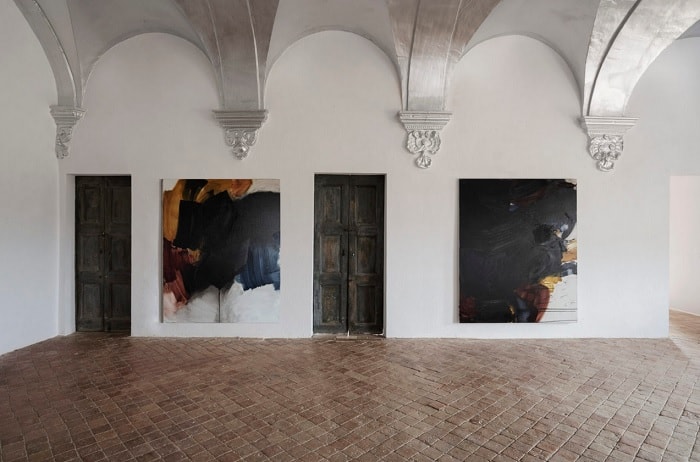Alternative exhibition spaces are creating new avenues for contemporary art. These types of venues move beyond conventional gallery models, enabling artists to present work in more intimate and deeper ways.
By engaging beyond the walls of the gallery, these spaces support a plurality of identities and create relationships between artists and their communities. Such environments often prioritize inclusivity and creativity, allowing space for underrepresented voices to thrive in the art world. It allows artists to test out ideas and subject matters free from the confines of traditional environments.
Visitors to these spaces might come across exhibitions that provoke discussions about social issues, identity and culture in a more intimate setting.
In an art world that is ever-changing, alternative spaces offer new platforms for artists to reach wider audiences. These spaces break notions surrounding the presentation of artwork and invite a reciprocal interaction with the public. Briefly, accessing contemporary art beyond its traditional perimeters expands the horizon of the cultural sphere and widens the understanding of the language art can articulate.
Exploring Alternative Exhibition Spaces
Alternative exhibition spaces have changed the way art is displayed and experienced. These venues offer innovative environments that challenge traditional gallery norms and promote inclusivity. They provide a platform for underrepresented artists and engage with diverse communities.
Evolution of Non-Traditional Venues
Since the 1970s, alternative exhibition spaces have become crucial platforms for artistic expression. For example, 112 Greene Street in New York City, one of the first of its kind, established a precedent in art displays not based on business considerations. It was a collective effort of artists who stressed non-commercial displays.
Artists Space, located in SoHo, continued this trend by fostering new voices and ideas. These spaces are often rebuilt houses like old ones (e. g warehouse now).
This conversion not only increases the value of the art experience but also brings a wider audience. Here, emerging artists find great opportunities to exhibit their work in an environment that suits them without the constraints found in conventional galleries.
The Significance of Inclusivity in Art Spaces
Alternative spaces play a vital role in amplifying marginalized voices. They prioritize representation for underrepresented artists, particularly women, artists of color, and those highlighting social issues. By creating a platform for diverse perspectives, these venues enable meaningful conversations within communities.
Artistic practices in these spaces often reflect collaboration and community engagement. They encourage artists to work together, breaking down barriers between disciplines and mediums. This emphasis on inclusivity strengthens the art community and fosters a sense of belonging. The result is a more vibrant and relatable art scene.
Impact of Alternative Spaces on Contemporary Art Practices
Alternative exhibition spaces have transformed the practice of contemporary art by experimental art forms. Because they lack the constraints of conventional gallery spaces, they foster experimentation and interdisciplinary practices. Many artists today are experimenting with collaboration, making interactive works that invite audience engagement. This move promotes a fluid flow of thoughts and idea sharings, and urges unconventional forms of art.
And the emergence of alternative spaces signals a redemption of valuation at play. It is about community not commerce, valuing the shared experience of art over its fiscal value.” These spaces have continued to grow, forever changing the contemporary art landscape.
Challenges and Innovations
Alternative exhibition spaces present unique challenges and innovations that influence their effectiveness and impact. These spaces often expand artistic expression beyond traditional gallery settings, but they must navigate issues like funding, accessibility, and their role within the broader art ecosystem.
Navigating Funding and Accessibility
Funding remains a critical challenge for alternative exhibition spaces. Many rely on public funding, donations, or grants from organizations like the National Endowment for the Arts. These financial sources can be unpredictable, impacting program development and staffing.
Accessibility also poses a significant hurdle. Non-traditional venues must ensure that their spaces are welcoming to diverse audiences, including those with disabilities. This can mean physical modifications or offering programs that cater to underrepresented groups, such as feminist artists or marginalized communities.
Influence on Mainstream Art Ecosystem
Alternative spaces can cut against the grain, disrupt, and innovate, within the mainstream art ecosystem. They push museum and gallery norms to their limits by encouraging inclusivity and social justice.
Notably, venues such as The Kitchen and Exit Art represent diverse voices, including performance art and emerging artists, that commercial galleries may miss in their vision.
That influence can provide a spur for old institutions to acclimatize. Museums such as the Museum of Modern Art have also begun to embrace some of the principles of these alternative spaces, resulting in more dynamic shows and a wider range of artistic perspectives.
Adaptive Reuse and Participatory Practices
Food that nourishes the social practices cultivated within it, though, is one ingredient that cannot be bought or negotiated, as it had taken root long ago and would in a sense remain ageless, for many alternative exhibition spaces use adaptive reuse and the function their new venue now serves.
The philosophy not only protects architecture but also gives birth to singular territories for creating art. This trend is exemplified in spaces such as the New Museum in New York, spaces that have created a sense of place that echoes within the community.
They rely on participatory practices for the success of these venues. Many invite audience participation by creating interactive installations or collaborative projects. Such spaces help bring people together, forgoing the preconceived notion of an art gallery, whereby the public is engaged in the creative process, allowing a more collaborative sense of the artists and the audience, essential for growing communities and social dialogue.

Pingback: How Can Art Amplify Efforts to Address Climate Change? – Real Life: An Installation